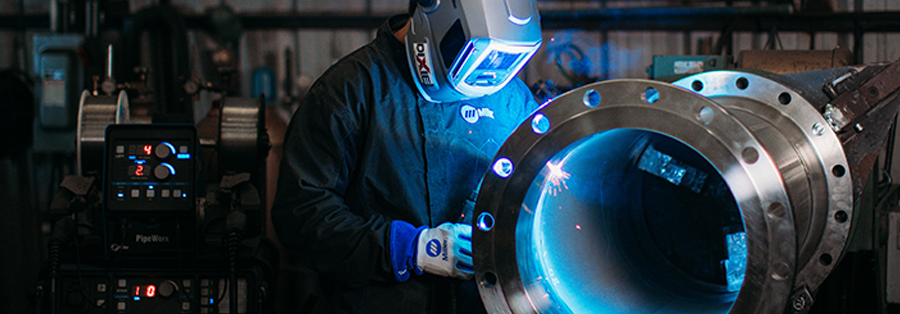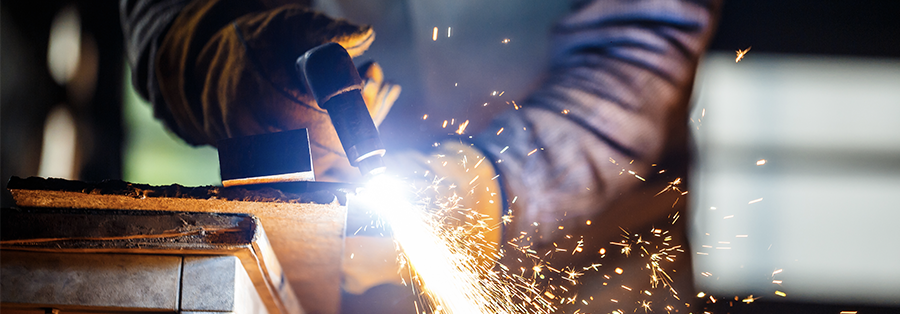Howard had been welding for more than a decade. But tonight, he was at home, watching a movie with his wife on the couch. In the movie, a background character picked up a welding torch and struck an arc. Without even thinking, Howard yelled “Look away” as he leaped to cover his wife’s eyes.
Years of training had ingrained into Howard’s brain that welding flashes would burn unprotected eyes, to the point where it had become an involuntary reflex. As welders, there are certain welding safety habits that most of the community is very good about following.
However, there are also several safety aspects not often talked about — some that can have deadly consequences. That’s why it’s important to know about the welding hazards that often go overlooked.
Death by Paper Cuts
In case you’re shaking your hand in fury yelling, “I’ve welded for 87 years and I’ve never once gotten a paper cut,” we just wanted to clarify that “death by paper cuts” is an expression. It means that, with enough time and exposure, even small hazards can have a serious impact on your well-being.
Jeffrey Tamraz had been welding for 25 years. Growing up, he’d always been good with his hands. Welding was a natural fit for his skills and interests. Eventually, he even started teaching others how to weld.
But by the age of 47, Jeff had developed a severe twitch. He had become uncoordinated and sluggish. After searching for a cause, doctors landed on the 25 years that Jeff had been breathing in welding fumes.
Now, not all welding fumes are equal. For instance, the fumes from welding or removing galvanized steel are generally worse than uncoated mild steel. Because of this, it’s difficult to track the exact impact of welding fumes. But as Grandpa always said, “It’s not a good idea to sit there and breathe in your own smoke.”
The best protection is often a PAPR system. These pull cold, clean air to your helmet. They’re often used for professional projects where OSHA requires them, but plenty of welders also have them for personal use.
Fume extractors are another good option, especially if you’re welding in a permanent location like a workshop or garage. A fume extractor is basically a vacuum for harmful welding fumes. It sucks them up and filters out the contaminants. 20 years ago, fume extractors were quite expensive, but the new portable fume extractors only cost a fraction of what they once did.
Filter masks are one of the most accessible options. They’re cheap and easy to store and transport. However, they’re not as comfortable as some of the other options, especially in hot, humid environments. You also need to make sure you’re getting a good seal and changing out your filters regularly.
Good ventilation is always encouraged whenever possible. This can be a little tricky because all welding processes use shielding gases (even stick — the shielding gas is just baked into the rod). If you have too much ventilation (or wind), your shielding gas will have a hard time protecting your weld pool. At the very least, make sure to crack a window in your workshop or open your garage – anything so your weld fumes aren’t just accumulating in the space you’re breathing.
For some reason, a lot of welders don’t talk about welding fumes. While they’re generally not deadly (depending on what you’re welding), exposure to fumes over a long period of time has been proven to have a negative impact on your body. If we normalize protecting ourselves today, we won’t have to deal with the long-term consequences down the road.
T-Shirt And Barehanded Welding
This hazard is more of an issue to hobby welders, but there are plenty of professionals we see wearing t-shirts and no gloves while laying beads. Some people don’t realize that welding produces UV rays, very similar to what you’d get from the hot sun on a cloudless day.

The tough part about this is that everyone’s skin is different. For some welders, even an hour or two of welding in a t-shirt will leave them raw and red with essentially 2nd or 3rd-degree sunburns. For other welders, their skin can be exposed significantly longer. But as most professionals learn, eventually it catches up with you.
The solution is pretty simple: cover up your arms and hands. In the winter, this is pretty easy. However, in the summer, wearing thick layers in the heat can really suck. Luckily there are some incredibly nice, lightweight clothing options that keep you covered while still allowing you to stay cool. For instance, the Revco Black Stallion BSX jacket provides solid protection without roasting you alive.
Eye Fatigue
One study took 76 welders with an average of 25 years of experience and compared them against 42 non-welders. The researchers found that the welders scored lower in color vision tests. Other studies have found that increased eye fatigue during welding can up your chances of an accident occurring as well as lower the quality of your work.
For most experienced welders, the above studies probably aren’t much of a surprise. If you spend 8 or more hours a day looking through a shaded, green-tinted lens that’s specifically designed to cut out certain types of light, it’s going to have a major impact on your eyes.
Welding equipment manufacturers have recently come up with solutions that can help. Miller’s new digital helmets include Clear Light 2.0 which displays much truer colors compared to traditional lenses. On Lincoln’s end, their new helmets now have 4C tech that likewise helps with eye fatigue by reducing the lime green tint found in traditional lenses. If you’re an Oprtrel or ESAB fan, they also have similar technology in their new helmets.

As a welder, your body and your equipment are the two most important resources you have. Being aware of the welding hazards not often talked about can help ensure you’re capable of welding for a long time while enjoying what you do. With the warmer months now upon us, it’s a great time to make sure you’ve got protective equipment that’ll keep you cool and covered. Check out all the best gear from the top brands at the best prices here.







